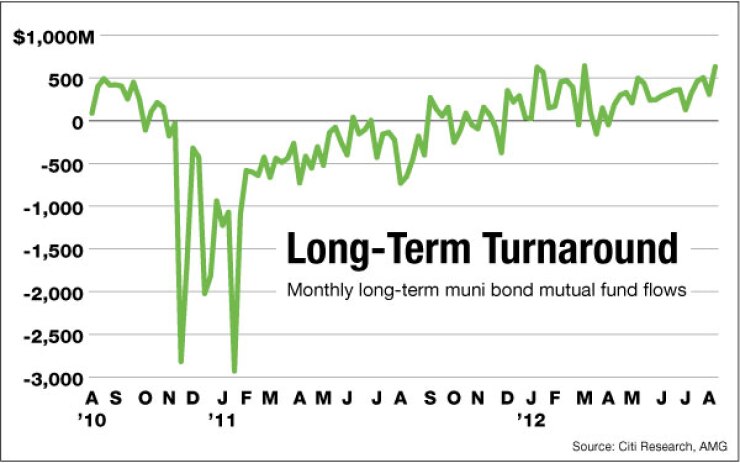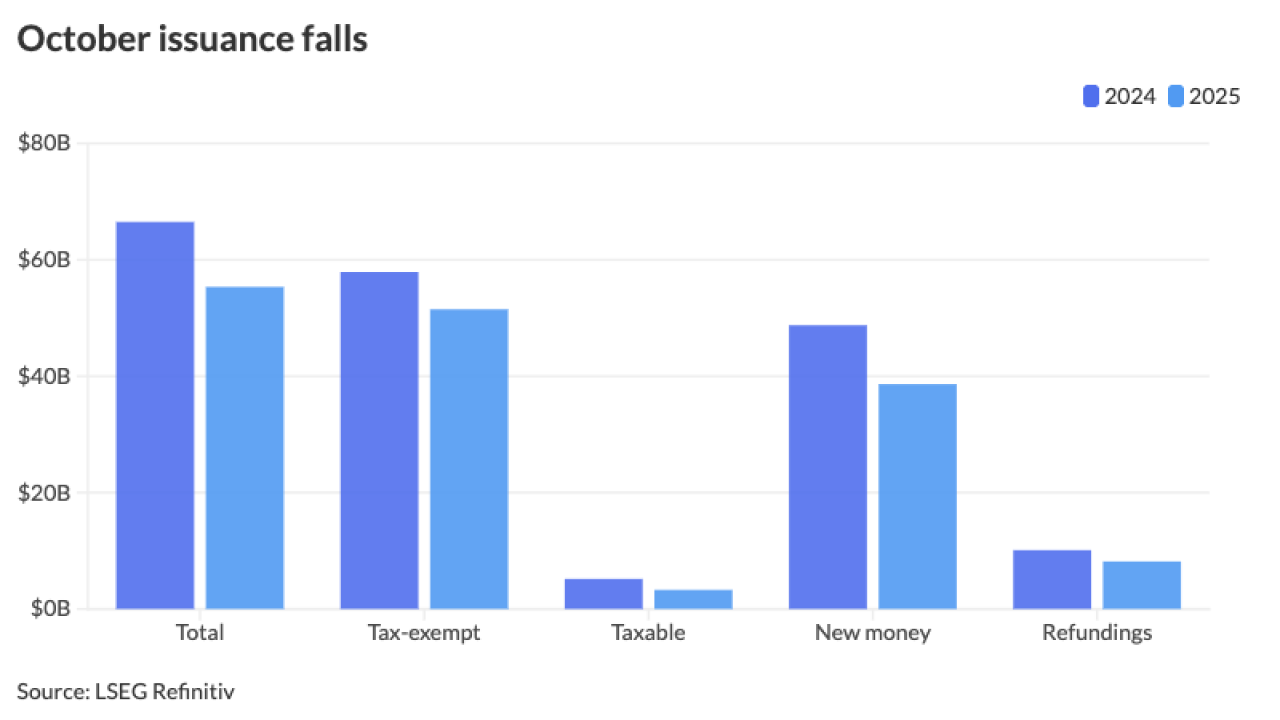

Individual investors like what they see in long-term muni bond mutual funds and so have been pouring more money into them in 2012 than they have in years.
They appreciate the distribution yields portfolio managers secured with purchases several years back that have led to higher payouts than they could otherwise get buying a long-term bond at today’s barrel-scraping yields.
Also, in a time of more headline scares, investors increasingly want large asset management firms to do their credit research for them, industry watchers said.
“Right now, [long-term muni bonds are] still good relative value, even though we’re seeing low yields,” said Tom Weyl, director of research at Barclays. “If someone is thinking about managed munis while looking for a tax-advantaged investment, the diversification and the payout in the fund right now are probably a compelling buy.”
The numbers highlight the demand. For the year to date, long-term fund flows have almost reached $14 billion, according to Lipper FMI numbers, the most since 2007. That is a big turnaround from the same period in 2011 when investors were pulling cash out of muni funds amid predictions that there would be a wave of defaults.
Since early July, flows into long-bond funds have accounted for roughly half of all muni bond fund flows.
The weekly average is also up to $300 million in 2012, Citi analysts wrote in a research report. In addition, the four-week moving average of all long-term funds sits at its high for the year, as well as its highest level since October 2009, Citi research showed.
Individual investors typically are the ones buying into the funds. In the past, a financial advisor may have bought individual bonds for that investor. Today, however, that financial advisor must determine if he should buy those bonds on his own, recommend a separately managed account or recommend a fund. Right now, Weyl said, the argument for a fund is fairly compelling.
Looking across sectors, Weyl added, investors find that when they compare a yield on a long-term muni fund versus the individual bonds, the funds have better yields now because the existing portfolio was booked at higher rates. In this extremely low-yield environment, investors recognize that some portfolio managers bought long-term debt for their funds several years ago at 4% and 5% coupons.
Subsequently, the distribution yields, or coupon yields, for the funds are going to be greater than if investors buy long-term debt at today’s yields.
“They’ve booked 5% coupons at par over the last seven or eight years,” Weyl said. “In the last two, it’s come down, and now they’re booking their 5% coupons and their 4% coupons at a premium. But the average yield, the payout, is still better than the 3.5%, or whatever you’d get on that high-grade bond that you’d sell today.”
Of course, eventually, dividends may have to be lowered from current levels as funds are forced to buy more bonds with lower yields. If interest rates should reverse course and move higher, current buyers would see fund share prices decline.
But for now, fund managers are hungry for paper as new cash is added to their coffers by investors who have been impressed by reports of double-digit returns for munis of late.
Fund managers also have been losing bonds that have been called away, and that has increased demand among portfolio managers for long-term bonds as replacement paper, said Vikram Rai, a municipal strategist at Citi.
Still, fund managers who hold 5% coupons are not selling them if they don’t have to, a trader in New York said. They don’t want to reinvest that money into a 3% coupon at current yields.
Finally, credit scares are pushing more money to fund managers, Rai said. All of the negative headlines recently about California and the bankruptcies there are spooking many retail investors. While direct retail buying could be weak partially due to “rate shock,” many investors are unwilling to take on the burden of credit research and prefer sending their money to bond funds.
“We think there’s some cannibalization of the retail flows by the bond funds,” Rai said. “That’s why bond funds look so great, because retail flows are making their way to them.”





